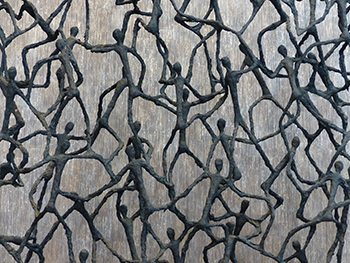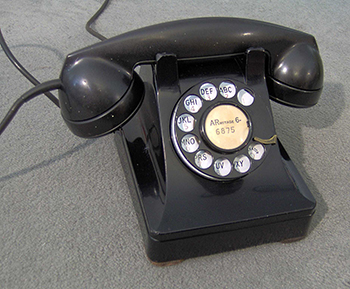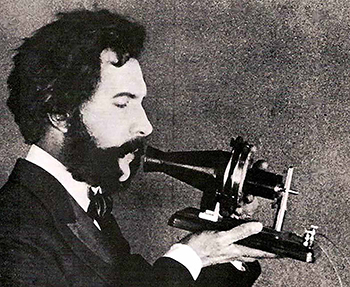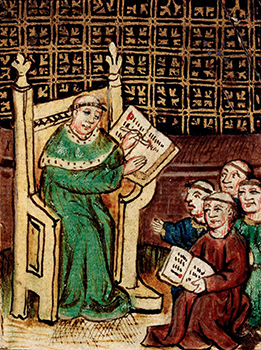FEATURED STORY
Experience design is shaping our future
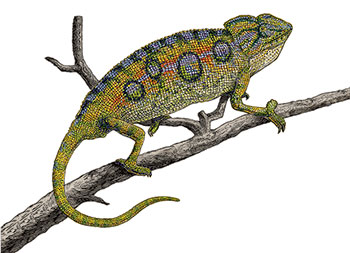
Design aligns humans and technology, it aligns business and engineering, it aligns digital and physical, and it aligns business needs and user needs. Here at O’Reilly, we’re fascinated by the design space, and we’re launching several initiatives focused on the experience design community. Read more...

Simon King on design at IDEO
The O’Reilly Design Podcast: Team dynamics and culture at IDEO, design education, and design’s next big challenge.
Subscribe to the O’Reilly Design Podcast, our podcast exploring how experience design—and experience designers—are shaping business, the Internet of Things, and other domains. Find us on Stitcher, TuneIn, iTunes, SoundCloud, RSS.
In this week’s Design Podcast episode, I sit down with Simon King, director of Carnegie Mellon University’s Design Center. King is the author of Understanding Industrial Design. We talk about team dynamics and culture at IDEO, extending design education to non-designers, and design’s next big challenge.
Here are a few highlights from our conversation:
CMU’s Design Center and the designer shortage
The idea is behind the Design Center is to bring design to more students across the whole campus and to create new kinds of research opportunities to work with organizations from outside of the university as well. There’s really two levels to think about the designer shortage, and one is what I’m trying to do with the Design Center: increasing the overlap with design that many people might have, where there’s this idea that you’re able to hire someone who’s design savvy, or design literate, or can bring some of the tools of design to their core discipline. That helps, but the bottleneck of ‘there just aren’t enough really skilled designers coming out of master’s programs and that are true experts’—I don’t have a good solution to that. I look at it and I think, ‘design is something you have to learn by doing. You have to build up this set of experiences over time, and it just takes time.’ There’s no silver bullet in terms of meeting the increasing demand.
Combining it with formal education might be more about a bigger mindset shift and not as much about specific skill building. Another approach is something we’re seeing at CMU, where there’s now a variety of programs. At the master’s level in the School of Design, there’s now options for students that are one year in length, or two years in length, or if they didn’t come in with a design background previously, potentially up to three years in length. It used to be there was just a two-year master’s program. I think that universities are recognizing the need for flexibility there, so that, depending on people’s goals or the time commitment that they’re willing to put in, there’s options for them.

Scott Hurff on designing at Tinder
The O’Reilly Design Podcast: Design at Tinder, Awkward UI, and the UI Stack.
Subscribe to the O’Reilly Design Podcast, our podcast exploring how experience design—and experience designers—are shaping business, the Internet of Things, and other domains: Stitcher, TuneIn, iTunes, SoundCloud, RSS.
In this week’s Design Podcast episode, I sit down with Scott Hurff, product manager and lead designer at Tinder, Inc. Hurff is the author of Designing Products People Love. In this episode, we talk about how Tinder approaches design, avoiding awkward UI, and why customer research is the most important skill for future designers.
Here are a few highlights from our conversation:
Questions of structure
At Tinder, the product team is about five people, six people. What’s interesting is that we’re trying to grow really quickly. There’s a give and take on how we divide up product design responsibilities and product management responsibilities. There is a lot of engineering talent here, and they need a lot of product to work on. It’s a matter of, how do we structure ourselves so we can give them thought-through, packaged-up, ready-to-go ideas and concepts while still hammering out the details in time.
Design as a full-contact sport
Design is such a part of the Tinder experience. It may not seem like that’s the case because it’s such a simple app, but that’s only because everything goes through this distillation process. You have to really fight for real estate and your idea. Design’s really a full-contact sport here. You have to bring in all the big guns to make your case. Sometimes these can be really long debates, but they’re good; they’re healthy. They get the ideas out on the table, and a lot of times, design really has to be put through its bases to prove itself.

Tanya Kraljic on designing for voice at Nuance
The O’Reilly Design Podcast: Moving from GUI to VUIs.
Subscribe to the O’Reilly Design Podcast, our podcast exploring how experience design—and experience designers—are shaping business, the Internet of Things, and other domains.
In this week’s Design Podcast episode, I sit down with Tanya Kraljic, UX manager and principal designer at Nuance Communications. Kraljic recently spoke at OReilly’s inaugural Design Conference (you can find the complete video compilation of the event here). In this episode, we talk about the challenges of moving from graphical to voice interfaces, the voice tools ecosystem, and where she finds inspiration.
Here are a few highlights from our conversation:
We’re seeing a renewed emphasis on design at Nuance—actually, much like in the technology industry as a whole. We’ve always had great engineers who are building this very complex, very cutting-edge technology. Now, we’re augmenting that with a human-centered approach to product strategy and development, which I think we’re already seeing as accelerating innovation in our own company and, hopefully, it will also help create better and more usable solutions as voice becomes available in all these different technologies.

Chrissie Brodigan on user research at GitHub
The O’Reilly Design Podcast: Product development, user research, and identifying blindspots.
Subscribe to the O’Reilly Design Podcast, our podcast exploring how experience design—and experience designers—are shaping business, the Internet of Things, and other domains.
In this week’s Design Podcast episode, I sit down with Chrissie Brodigan, manager of user experience research at GitHub. Brodigan will be be speaking at OReilly’s inaugural Design Conference. In this episode, we talk about user research and product development at Github, and the blindspots in product development and organizational development.
Here are a few highlights from our conversation:
Our internal philosophy around research is about when we make our design decisions, we come up with hypotheses about how that design change will impact behavior as well as user experience. We may need to add a particular control to the workflow, but if it has a negative consequence on the overall experience of our users, we may decide that that’s not the right decision for us. Even if it’s helpful in one area, it causes unhappiness in another. We measure impact with controlled experiments, which a lot of people would refer to as ‘AB testing.’ We do do some variance testing, which is short term, but we also do longitudinal analysis, which is to study a cohort over a longer period of time. Internally, we’re always asking ourselves ‘Why?’

Wesley Yun on GoPro’s design approach
The O’Reilly Design Podcast: Managing, mentoring, and recruiting designers.
Subscribe to the O’Reilly Design Podcast, our podcast exploring how experience design—and experience designers—are shaping business, the Internet of Things, and other domains.
In this week’s Design Podcast episode, I sit down with Wesley Yun, director of user experience on the hardware side at GoPro. Yun will be be speaking at O’Reilly’s inaugural Design Conference. In this episode, we talk about managing and recruiting designers at GoPro, Designer Fund’s Bridge Guild, and mentoring the next generation of designers.
Here are a few highlights from our conversation:
Managing is humbling. My job isn’t to tell my designers what to do. My job is to hire the best designers I know how to, or I can hire at the organization that’s right for them and then create this space and the opportunity for them to do the best work of their life. That, to me, is what a good manager does. I very rarely tell my designers what to do. I help them frame problems. I help them sell ideas. I help streamline their thoughts.
[When recruiting], I look for things that are very unique, not something that you can see on a page or a resume. There are people who just bring a sense of joy and happiness and collaboration and trust; it’s nothing specific that you can ever point out.

Kathryn McElroy on IBM’s design approach
The O’Reilly Design Podcast: Prototyping for digital and physical, IBM’s bet on design, and diversity in design.
Subscribe to the O’Reilly Design Podcast, our podcast exploring how experience design — and experience designers — are shaping business, the Internet of Things, and other domains.
In this week’s Design Podcast, I sit down with Kathryn McElroy, design lead on IBM’s Watson team. McElroy will be be speaking at O’Reilly’s inaugural Design Conference in January. In this episode, we talk about prototyping for digital and physical, design and diversity, and what it’s like working at IBM.
Here are a few highlights from our conversation:
I see the shift from an engineering feature-based product design to a user-centered product design across a 380,000 person company to be the most challenging but most impactful place that I can work. On a day-to-day basis, how this comes through is how we interact with our teams. As designers coming into this ecosystem, a lot of these people haven’t really heard about user-centered design until they come to our design boot camps here in Austin.That’s when we bring all of our product teams together—the business people, the engineers, and the designers—to center around their product and think about it from the user’s point of view. … What’s the most interesting about this is just the fact that it’s at this mind-boggling scale.
Specifically for physical prototyping, I learned mostly self-taught during my MFA program. I had a couple of great classes where we were focused on building electronics, and that was the first time I was introduced to it. I’ve only been doing it for three years, but it’s something you can learn on your own. There’s so many people with guidance out on the Internet and are willing to help you.
